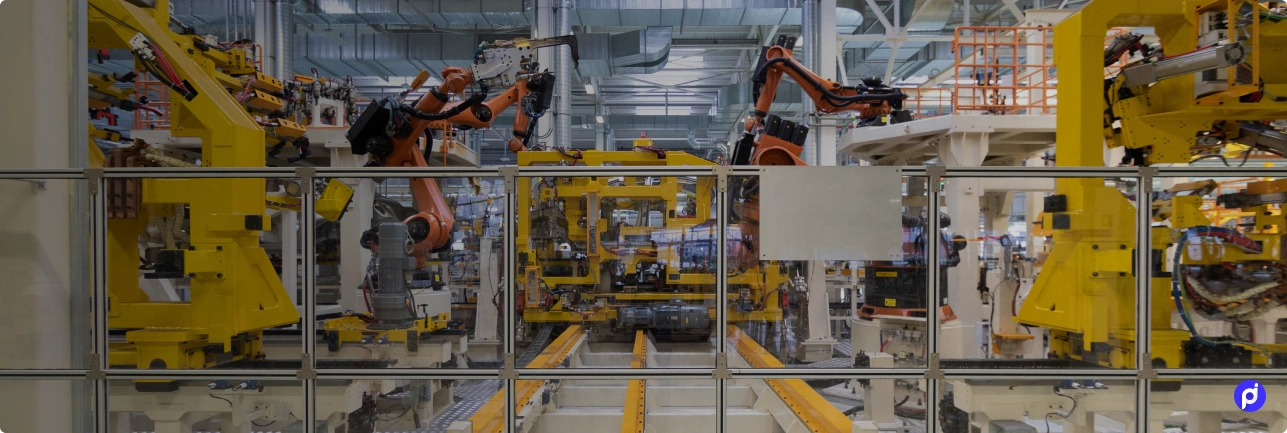Are you facing trouble examining data and gaining insights? Can you say which industry you belong to? From healthcare to finance, and from retail to manufacturing, organizations are harnessing the power of Data Science and Analytics Services to gain actionable insights, improve decision-making processes, and stay ahead of the competition. Take part in it and remove all your troubles. Let’s explore the sectors transformed by the relentless march of data science.
Industries Influenced by Data Science
1. Healthcare
The healthcare industry is undergoing a profound transformation, thanks to advancements in data science and analytics. In healthcare, Enterprise Business Intelligence platforms integrate diverse sources of patient data, including electronic health records (EHRs), wearable devices, and IoT sensors, enabling comprehensive analysis and predictive insights. With the integration of electronic health records (EHRs), wearable devices, and IoT sensors, healthcare providers can collect vast amounts of patient data. Data science techniques enable predictive analytics for disease diagnosis, personalized treatment plans, and proactive healthcare management. Through data-driven insights, healthcare organizations can enhance patient care, streamline operations, and drive better clinical outcomes.
2. Retail
In the hyper-competitive retail sector, data science is revolutionizing how businesses understand and engage with customers. By analyzing vast volumes of transactional data, social media interactions, and demographic information, retailers can uncover valuable insights into consumer behaviour and preferences. Data-driven marketing strategies enable personalized recommendations, targeted promotions, and optimized pricing strategies. With the help of data science and analytics services, retailers can enhance customer satisfaction, increase sales, and drive business growth in an increasingly digital marketplace.
3. Finance
The finance industry has long been at the forefront of data-driven decision-making, and data science is taking it to new heights. By leveraging advanced analytics techniques and machine learning algorithms, financial institutions can detect fraud, assess risk, and optimize investment strategies with unparalleled accuracy. Data science also enables personalized financial services, such as algorithmic trading, robo-advisors, and customized wealth management solutions. Through the adoption of enterprise business intelligence solutions powered by data science, financial firms can drive operational efficiency, mitigate risks, and deliver superior value to their clients.
4. Manufacturing
In the era of Industry 4.0, data science is revolutionizing the manufacturing sector, driving efficiency, and innovation. IoT sensors, predictive maintenance algorithms, and real-time analytics enable manufacturers to optimize production processes, minimize downtime, and improve product quality. Data-driven insights facilitate demand forecasting, supply chain optimization, and predictive maintenance, leading to cost savings and enhanced competitiveness. Manufacturers can unlock new opportunities for growth, innovation, and operational excellence by embracing Data Science and Analytics Services.
Finished reading? Here is our final message
The industries discussed above are only the tip of the iceberg, Data Science influences many other industries. Data science is reshaping industries across the board, driving innovation, and unlocking new opportunities for growth and efficiency. As businesses navigate the complexities of the digital age, leveraging Data Science and Analytics Services is essential to stay ahead of the curve. Whether it’s healthcare, retail, finance, or manufacturing, organizations that embrace data-driven decision-making will thrive in an increasingly competitive marketplace. The future belongs to those who harness the power of data science to drive innovation and transformation.
The FAQ’s.
1. FAQ: How does data science impact patient care in the healthcare industry?
Answer: Data science enables healthcare providers to analyze vast amounts of patient data from sources like electronic health records (EHRs), wearable devices, and IoT sensors. This analysis facilitates predictive insights for disease diagnosis, personalized treatment plans, and proactive healthcare management, ultimately enhancing patient care and clinical outcomes.
2. FAQ: How does data science enhance customer engagement in the retail sector?
Answer: Through data analysis of transactional data, social media interactions, and demographic information, retailers gain valuable insights into consumer behaviour and preferences. This enables personalized marketing strategies, targeted promotions, and optimized pricing strategies, leading to increased customer satisfaction and sales growth.
3. FAQ: What role does data science play in fraud detection within the finance industry?
Answer: Data science leverages advanced analytics techniques and machine learning algorithms to detect fraudulent activities with high accuracy. By analyzing large volumes of financial data, financial institutions can identify suspicious patterns, assess risk, and implement robust fraud prevention measures, safeguarding both their assets and those of their clients.
4. FAQ: How does data science contribute to efficiency and innovation in manufacturing?
Answer: In the manufacturing sector, data science enables the optimization of production processes through IoT sensors, predictive maintenance algorithms, and real-time analytics. By leveraging data-driven insights for demand forecasting, supply chain optimization, and predictive maintenance, manufacturers can minimize downtime, improve product quality, and drive operational efficiency.
5. FAQ: What are the key benefits of embracing data science and analytics services across industries?
Answer: Embracing data science and analytics services enables organizations to drive innovation, unlock new growth opportunities, and enhance operational efficiency. By leveraging data-driven decision-making, businesses can gain valuable insights, streamline processes, mitigate risks, and stay ahead of the competition in today’s rapidly evolving digital landscape.













